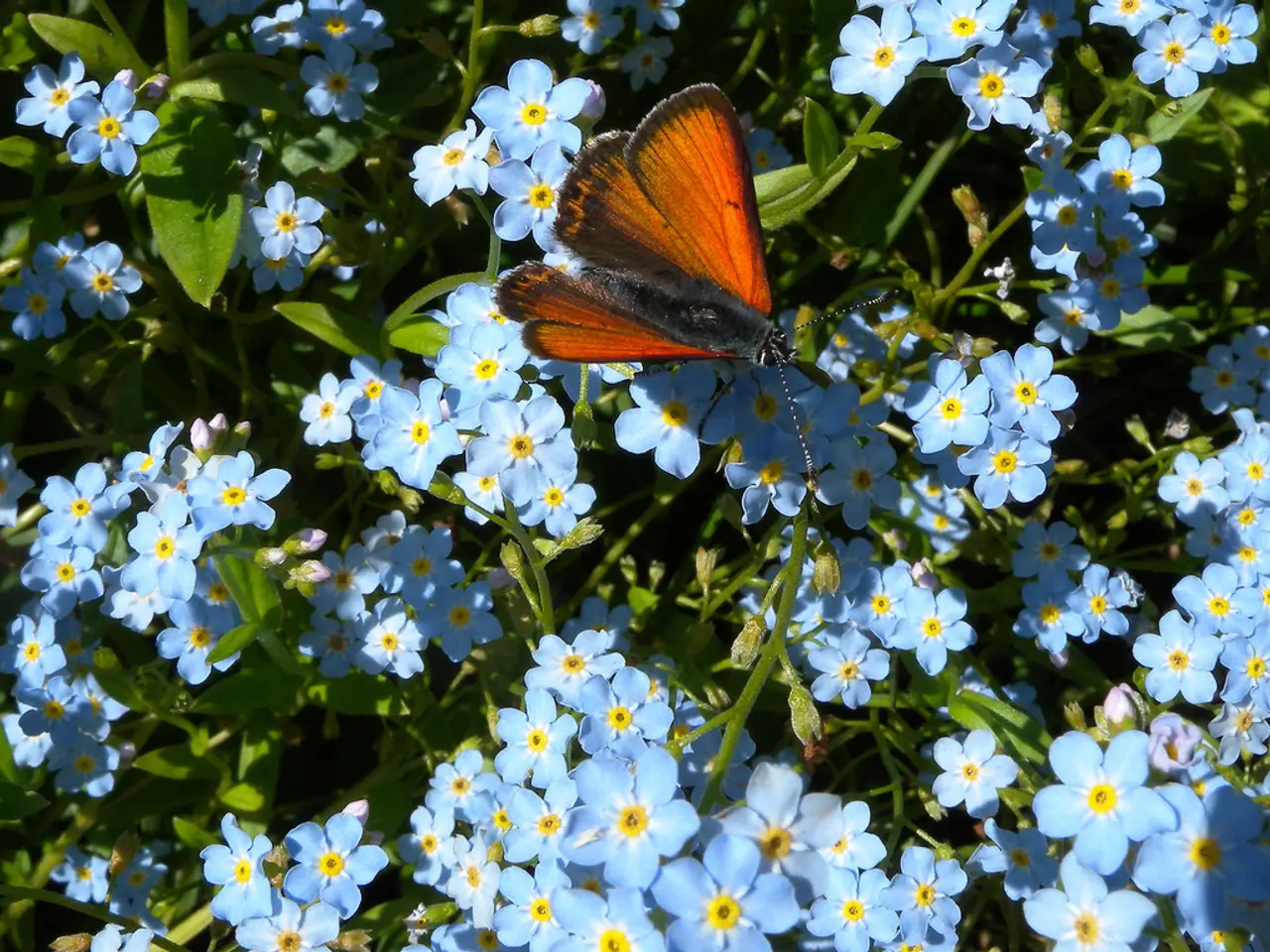Guide for Gardeners, Plant Collectors, and Plant Enthusiasts: Exploring the Agastache Plant
Agastache, a genus of about 22 species, is a must-have for any garden enthusiast. Known for their tall, slender spires of warm red-orange, purple, pink, orange, blue, and even blue-lavender flowers, these plants are a delight for the eyes and nose.
These versatile plants are widely used in pollinator gardens, mixed perennial borders, drought-tolerant landscapes, and even container gardens. They also have a place in herbal tea gardens thanks to their edible, aromatic leaves. Agastache brings long-lasting color, scent, and pollinator appeal to gardens with minimal upkeep.
Best practices for growing Agastache, including the common Anise Hyssop (Agastache foeniculum), involve seed propagation, proper spacing, light requirements, soil needs, watering, fertilizing, pruning, and addressing common issues.
Seed Propagation: Start seeds indoors 4 to 8 weeks before the last frost. Sow seeds barely covered in soil at around 60°–75°F. Germination takes 7–20 days. Thin seedlings to about 10–12 inches apart when they reach 1 inch tall. Seeds can also be sown outdoors 1 to 2 weeks after the last frost or in late fall for spring germination.
Spacing: Plant seedlings or young plants about 12 inches apart to avoid overcrowding and ensure good airflow and growth. Agastache plants should be spaced 30 to 45 cm (12 to 18 inches) apart, depending on the mature size of the variety.
Light Requirements: Agastache thrives in full sun, ideally receiving at least 6 hours of direct sunlight daily to promote healthy growth and abundant blooming.
Soil Needs: Agastache prefers well-drained soil but is not very particular about soil quality. Moist, well-drained soil is ideal. Agastache is drought tolerant once established and can tolerate poor soil conditions, but avoid heavy, soggy soils.
Watering: Water when the soil looks dry or when plants start to wilt, then saturate the soil thoroughly. Established plants are fairly drought tolerant and do not require frequent watering.
Fertilizing: Regular fertilizing is not necessary due to the plant’s tolerance of various soil types and its low nutrient demands. A light application of compost or a balanced, slow-release fertilizer in spring is sufficient. Avoid fertilizers high in nitrogen for Agastache plants.
Pruning: Pinch back the tips of young plants to encourage bushier growth and more blooms. Deadhead spent flowers regularly to prolong blooming and prevent self-seeding if undesired.
Common Issues: Anise Hyssop and related Agastache species are generally trouble-free. They may self-seed vigorously if not pruned. No major pest or disease problems were noted in the sources.
Agastache is attractive to hummingbirds, bees, butterflies, and birds enjoy the seeds. It grows 2 to 5 feet tall depending on the variety and is hardy in USDA zones 4 to 10 depending on species.
With proper care and spacing, Agastache can thrive in both small gardens and expansive landscapes alike. Whether you're growing them from seed, selecting standout cultivars like Blue Fortune or Firebird, or simply adding texture to your landscape, Agastache offers strong ecological and ornamental value.
For more information on Agastache, consider checking out breeders like Darwin Perennials, Plantipp, Terra Nova Nurseries, and PlantHaven. Look for products with a balanced NPK ratio or slightly higher phosphorus to promote blooms for Agastache plants.
Remember, a little love and care can go a long way in cultivating these vibrant, pollinator-friendly plants. Happy gardening!
- In a home-and-garden, Agastache, particularly the Anise Hyssop (Agastache foeniculum), is a must-have for any garden enthusiast, offering a range of colors from warm red-orange to blue-lavender with its tall, slender spires of flowers.
- In the design of gardens, Agastache plants are versatile, finding their place in various settings such as pollinator gardens, mixed perennial borders, drought-tolerant landscapes, container gardens, and even herbal tea gardens.
- In the industry, Agastache brings long-lasting color, scent, and pollinator appeal to gardens with minimal upkeep, making it a valuable asset in the world of horticulture and the lifestyle of hobbyist and professional gardeners alike.
- Artizans of the design world working in floral arrangements or home-and-garden magazines may find the vibrant foliage and strong blooms of Agastache an inspiring addition, due to its ability to attract various pollinators like hummingbirds, bees, and butterflies.
- In the news and the culture of gardening, breeders like Darwin Perennials, Plantipp, Terra Nova Nurseries, and PlantHaven offer a wealth of information on Agastache cultivation, from seed propagation techniques to standout cultivars like Blue Fortune or Firebird, providing more opportunities to incorporate this beautiful plant into the home-and-garden and horticulture industries.




